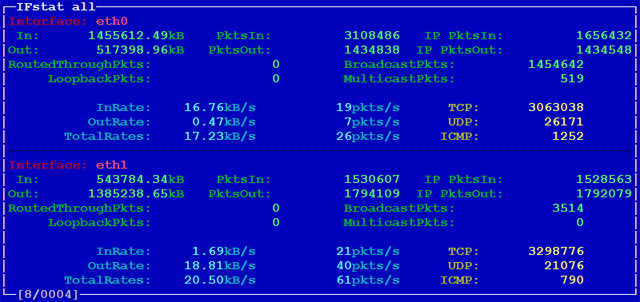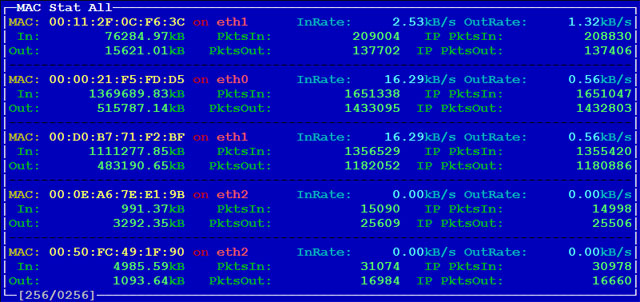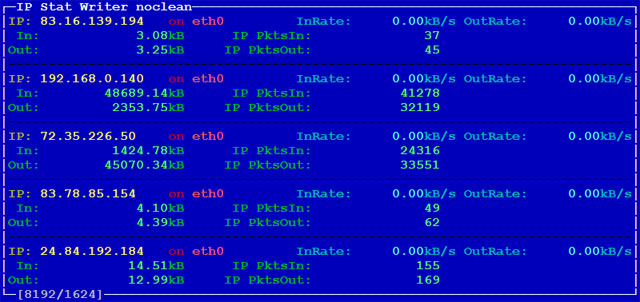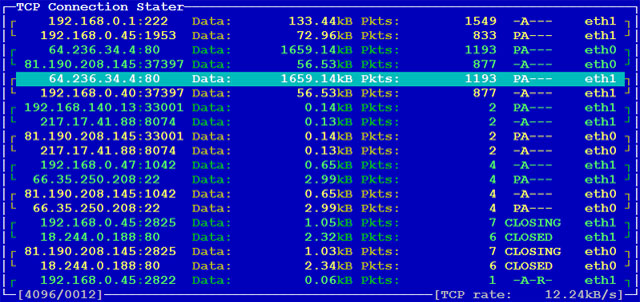netrafg User's Manual
About This DocumentThis document is the User's Manual for netrafg version 0.01[preAlpha27]. Here are documented features of the program and instructions of its use. Additional InformationSee the included README file for summarized and late-breaking information. The ChangeLog file contains a record of the changes made to the software (whole netraf project and in particular netrafg part of it) since netraf 0.1 Beta version. Introductionnetrafg is integral part of netraf project. It is in fact multithreaded front-end GUI to netrafd logging daemon, showing informations gathered from intercepted packets. This informations include:
Installation and System Requirementsnetrafg is available in netraf package. Program requires the following to run:
Starting netrafgAfter installation you can start the program by entering netrafg at the shell prompt. Notice that netrafd has to be run BEFORE netrafg. If everything went OK you will see program desktop. It consist of menu-bar (top of the screen), space for windows and status-bar (bottom of the screen). All major functions of the program can be found in main-menu (key F9). Status bar always contains help for key-bindings or short description (for menu-options). Creating new writerTo create new writer netrafg has to be run with root privileges. When sub-menu "New..." from "Function" menu is chosen, "Choose writer type" window will appear. Using cursor-keys chose writer type you want and press [enter] to select it. Depending on your selection one of following windows will apear:
Basically, in every of above window user can set "Writer name", assign Filter, and set logging options. Due to current netrafl status, logging options are available only to "Interface statistics writers" and "MAC statistics writers". Meaning of individual fields in "Logging Options" window are described in netrafl Working Scheme. Meaning of "Cleanup" field in "IP statistics writer" and "Inactivity" field in "Connection statistics writer" are described in netrafd.conf manual page. Opening previously created writerTo open writer of specified type, simply choose appropriate sub-menu from "Function" menu. After selection, window with all user-defined writer will apear. Choose writer you want to look at, and press [enter] to select. Closing writerTo close writer press [esc] on active window. Deleting (stopping) writerTo delete writer netrafg has to be run with root privileges. The operation is quite simple. Open writer you want to stop, and press [delete] button. Program asks you for confirmation and then deletes writer. Managing filtersAdding, editing and deleting filters can be done via main-menu "Filter" item functions. Meaning of individual fields are described in filters.conf manual. M.S. |



